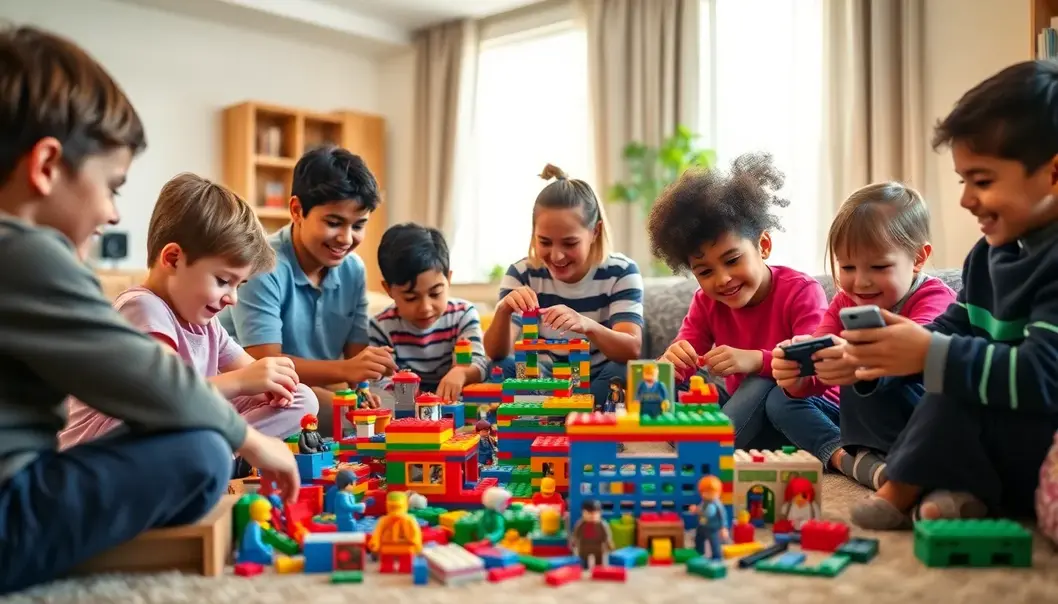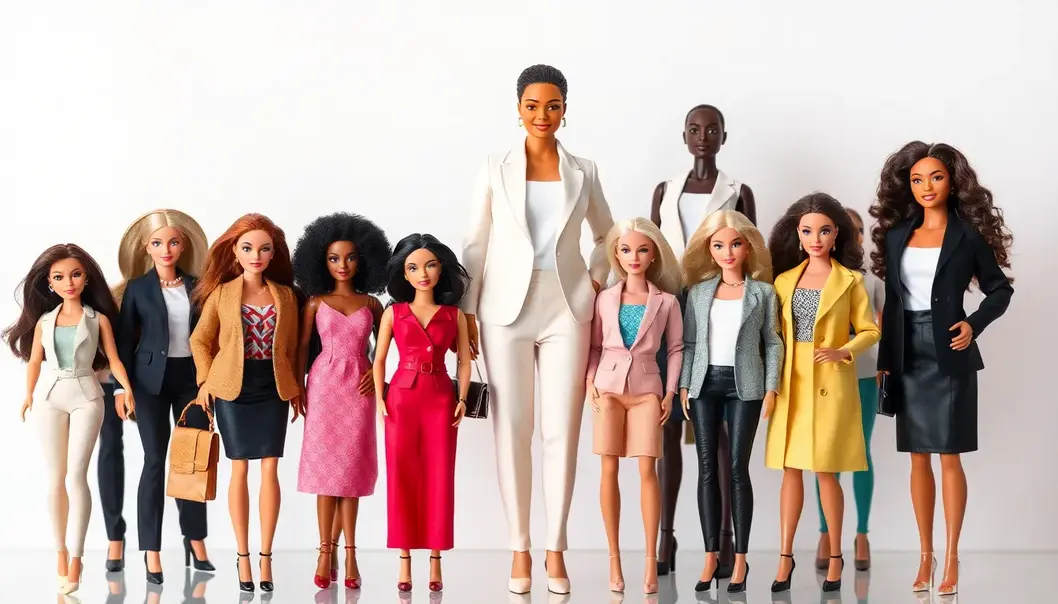Toys often transcend their intended use, morphing into cultural symbols that influence trends and social movements. Iconic playthings sometimes gain a life beyond the sandbox, influencing new patterns in media, fashion, and technology. These toys don’t just entertain; they guide massive shifts in public consciousness, reimagining the possibilities of storytelling and interaction. Join us as we delve into the stories of two legendary toys that conquered hearts and minds, transforming from simple amusements into pillars of pop culture. Discover how these items didn’t just spark joy but also innovation and cultural dialogue, paving the way for the multifaceted universe of today’s pop culture.
LEGO: Building More Than Blocks

Few toys have managed to transcend their origin as playthings to become an integral part of global culture like LEGO has. Beginning as simple interlocking blocks, LEGO has evolved to embody a narrative medium and a catalyst for creativity. The versatility of their design encourages interface, exploration, and the realization of visionary ideas. Today, LEGO stands not only as a toy but also as a cornerstone of creative expression.
The transformation of LEGO from a toy into a cultural phenomenon is most evident in its impact on storytelling. Each LEGO brick allows builders to craft their own stories, providing a limitless sandbox for narrative building. This innate capacity to facilitate storytelling naturally extended to film. The launch of LEGO-themed movies captured the imaginations of global audiences, transforming beloved characters into satirical and heartwarming takes. These films were both financial triumphs and cultural touchstones, enhancing the shared experience of LEGO building through storytelling.
On the digital frontier, LEGO has embraced video games, creating immersive experiences that combine construction with gameplay. These games offer rich, interactive worlds that echo the physical building experience, drawing in gamers by the millions. The adaptation to a digital format opened LEGO to new audiences, bridging generational gaps and expanding its cultural footprint.
Beyond the realm of entertainment, LEGO exerts influence through its global community of enthusiasts. LEGO clubs and conventions worldwide serve as gathering points for builders to exchange ideas, display their creations, and inspire one another. This community thrives on collaboration and innovation, celebrating achievements in techniques and design. The shared passion among LEGO builders reinforces creative freedom and bolsters the toy’s place in pop culture as a unifying force.
In exploring how LEGO became a cultural mainstay, one must consider its transformative versatility and role as a storytelling vehicle. The bricks did not just build structures but constructed new worlds, narratives, and communities. This power to connect and inspire has made LEGO an indelible part of our collective consciousness. As we delve into other toys that shaped pop culture, it becomes evident that LEGO is not a simple collection of blocks but a pivotal cultural beacon.
Barbie: Fashioning New Narratives

Few toys have encapsulated the zeitgeist of transforming societal roles and beauty ideals as astutely as Barbie. Since her debut in 1959, Barbie has been more than just a doll; she is a cultural icon that mirrors and sometimes even shapes the zeitgeist. Her revolutionary impact on fashion trends, narratives of empowerment, and discussions surrounding gender representation has been profound.
Barbie, with her impeccable fashion sense, has often been at the forefront of style innovation, seamlessly adapting to the shifting sands of fashion. Every Barbie outfit, from haute couture to casual chic, reflects the contemporary sartorial zeitgeist. These fashion choices often doubled as aspirational benchmarks, allowing young users to engage in a form of playful modeling while exploring different aesthetics. Over the years, Barbie’s wardrobe has become an archive of evolving fashion trends, each outfit a timestamp of cultural shifts.
Beyond the fashionable veneer, Barbie carved a niche in redefining beauty standards. Early critiques highlighted her unrealistic body proportions, sparking debates on body image and self-perception. In a move towards inclusivity, Barbie’s makers responded to these discussions by introducing dolls with diverse body types, skin tones, and features. These iterations allowed for a broader representation and acknowledgment of diverse forms of beauty, effectively shifting the narrative to one that respects and celebrates individuality.
Beyond physical appearance, Barbie has continuously redefined what it means to be a woman in the modern world. Gone are the days when Barbie was primarily seen in domestic settings. Instead, she has ventured into realms once deemed unthinkable, embodying roles from astronauts to CEOs. By representing over 200 careers, Barbie encourages children to dream without the limitations of traditional gender roles. She’s a pilot, a scientist, a surgeon—roles that foster perspicacity in young minds, breaking glass ceilings with each career path she exemplifies.
In media, Barbie’s presence is undeniable. Her influence transcends mere play, permeating TV shows, movies, and digital platforms. This media presence not only provided entertainment but also cemented her role as a storyteller, shaping narratives that align with contemporary themes of empowerment and diversity. Barbie’s animated series and films often serve as vehicles for imparting essential values, such as friendship, resilience, and the courage to stand for what is right, subtly influencing the perceptions of her young audience.
The toy industry itself has not been left untouched by Barbie’s influence. She has compelled competitors and manufacturers alike to rethink toy design and marketing strategies. The introduction of Barbie dolls with varied abilities, diverse backgrounds, and technological enhancements set new benchmarks for inclusivity and innovation. In the ever-evolving landscape of playthings, Barbie’s adaptability continues to empower and inspire.
Through these narratives, Barbie epitomizes the ongoing dialogue around gender, culture, and identity. She stands as a testament to the possibilities unlocked when imagination meets innovation, evidencing the transformative power of toys in shaping societal discourse. As each iteration of Barbie steps forward in fashionable stride, we are reminded that toys, too, can be vessels that carry forward the legacies of empowerment and progress.
Final words
Toys like LEGO and Barbie have transcended their playful origins, becoming central figures in global culture. Their influence stretches beyond simple enjoyment, bridging the realms of creativity and cultural discussions, thus reshaping societal perceptions. As these toys continue to evolve, they inspire fresh narratives and possibilities, ensuring vibrant cultural relevance. Embracing innovation and diversity, these iconic items act as cultural beacons, demonstrating the profound impact of toys on societal constructs and opening new pathways for future developments.
Explore the world of toy-inspired innovation and culture by visiting our platform for exclusive insights and updates.
Learn more: https://www.culturalinsightstoys.com
About us
Cultural Insights Toys offers a unique platform exploring how toys have shaped societal trends and fostered creativity. From in-depth articles to expert interviews, gain exclusive access to content that reveals the cultural significance of toys, guiding you to understand their impact on social dynamics and innovation.
